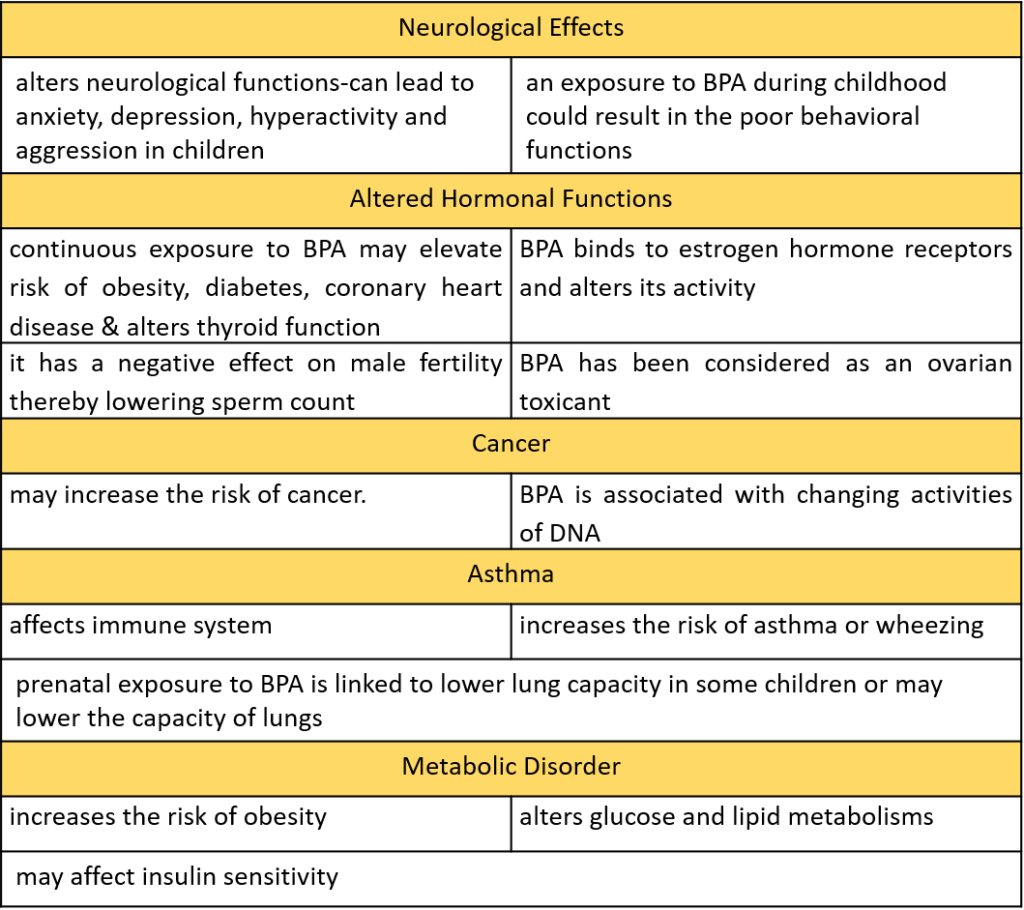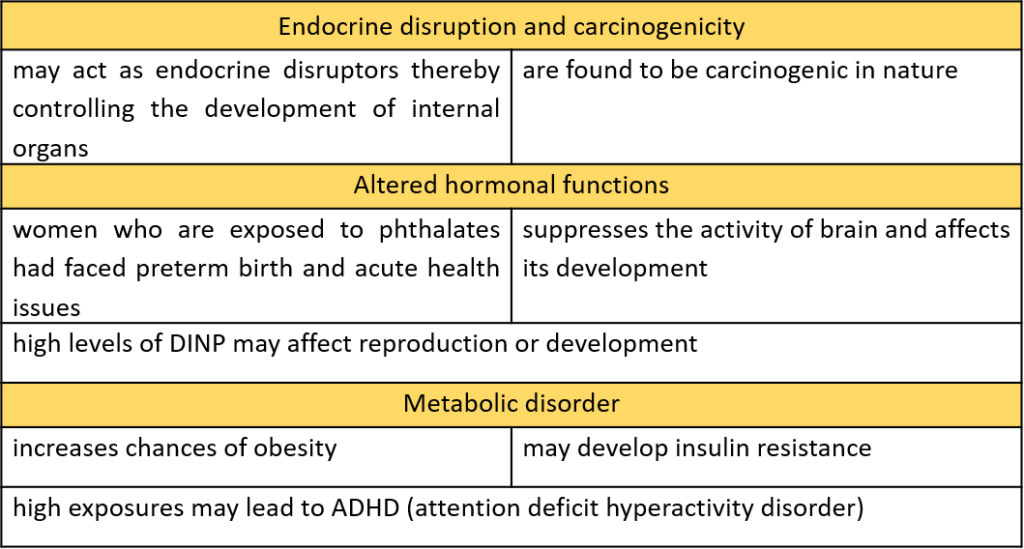Plastics are widely used by us in our daily lives. They are used widely due to their lightweight, flexibility, ease to handle and variety of colours. We are surrounded approximately by 70-80% of them ranging from food containers, disposable water bottles, packaging materials, children’s toys, automobiles, etc.


The plastic industries in India started with products like vinyl, acrylics, polyethylene, polystyrene, polycarbonate, polyester and PVC in large applications.
It is found that the chemicals present in the plastics may migrate into food being stored for a longer time. Heating of food/drink using inappropriate plastic could leach out an increasing amount of chemicals. Some of the chemicals and their health hazards are discussed below.
1. BPA-Bisphenol A:
BPA is a material used in lightweight plastics called polycarbonates which is hazardous in nature. It is mainly found in lining food and beverage containers, canned goods, water bottles.
Based on evidence largely from animal studies, the FDA expressed some concern about its potential effects on the brain-behaviour and prostate glands in fetuses, infants and young children. BPA has been found to be linked with various health concerns;

Besides food/drink, an exposure to BPA is also through skin absorption.

Exposure to BPA can be minimized by not using canned and frozen foods. Breastfeed your baby, do not use plastic bottles. Besides, there are many possible substitutes to bottles and containers containing BPA, such as stainless steel, Polypropylene (PP), Polyethylene Terephthalate (PET).
2. Phthalates:

Phthalate or phthalate esters are esters of phthalic acid mainly used as plasticizers (these are used to make plastic to get flexibility, transparency, durability and longevity). The most used phthalates are di-ethylhexyl phthalate (DEHP), diisodecylphthalate (DIDP), and diisononylphthalate (DINP). DEHP was the dominant plasticizer used globally in PVC due to its low cost. PVC is widely used in toys, chewy tethers, inflatable toys, vinyl flooring and wallpaper, food packaging and cling wraps, adhesives, dyes, ink, mosquito repellents, personal care products like nail polish, shampoo, soap, skin moisturizers and perfumes. Phthalate has been found to be linked with various health concerns;



- Avoid microwaving in plastics, replace them with ceramic or suitable glass containers.
- Take your own containers to carry food/drink as the packed plastic containers that may contain phthalates.
- This might also found in dairy and meat from animals that have been exposed.
In 2014, ICMR has been concluded and stated that leaching from plastic bottles had been demonstrated in various studies and these bottles should not be used for packaging drugs or any oral formulations. Hence, one should know about the product before purchasing.
3. Styrene:
Styrene is a petroleum product that is commonly found in Plastics and Styrofoam. This is primarily used in the production of polystyrene plastics and resins. Polystyrene is a lightweight, insulating material that can be in both solid and liquid form. Polystyrene is usually found in disposable plastic cutlery and dinnerware.

The studies suggest that the use of plastic food containers or packaging materials should not exceed the limit (i.e., Hazard Index <1). However, exposure to such styrene through the above-mentioned materials is more. Studies are also concluded that the migration of chemicals is more when food is stored in styrene-containing plastics.
Another study on ‘disposal plastic containers’ indicates that styrene tend to migrate more quickly when food or drink are hot.

- Use non-plastic glasses/containers only.
- Ask for non-Styrofoam bowls and glasses when having outside food. Ex, cooked noodles, egg/paneer burji, flavoured rice, biryani, gravies, fruit juices, etc.
- Prefer steel, glass, copper, ceramic, terracotta, earthenware, melamine containers that do not contain metallic paint.
Related article:
